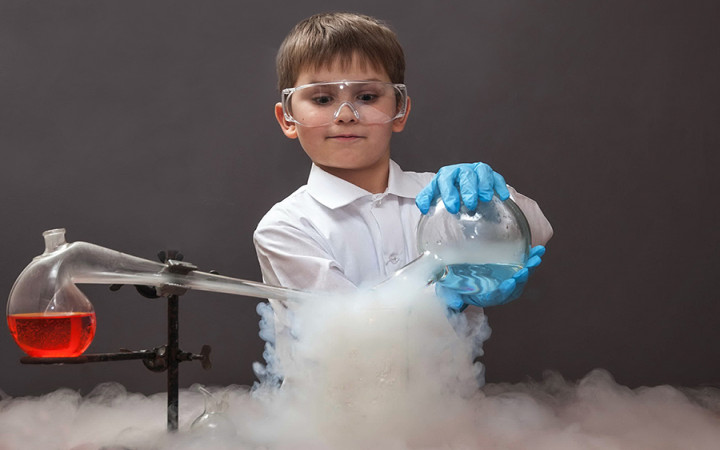Today’s Wonder of the Day was inspired by Sarah from Edison, NJ. Sarah Wonders, “How is liquid nitrogen made?” Thanks for WONDERing with us, Sarah!
What do you like to drink on a hot day? If you're out playing on a scorching summer day, there's nothing quite like taking a break to quench your thirst with a tall glass of ice-cold refreshment. Plain water will satisfy a powerful thirst, but sometimes people prefer the taste of fresh lemonade or sweet tea.
If you get really hot, you might yearn for a dip in that cool oasis we know as a swimming pool. Your mind might turn to inviting thoughts such as sliding down a glacier, floating alongside an iceberg in the Arctic Ocean, or swimming alongside penguins at the South Pole.
When we experience extreme heat, it's only natural to fantasize about extreme cold. However, even the coldest things and places on Earth can't match the super-cooling power that only science can provide.
For example, did you realize that a prevalent gas in Earth's atmosphere can be cooled to the point that it turns into a liquid so cold that it will instantly freeze a flower's petals, making them so fragile that a simple touch can shatter them? It's true! What are we talking about? It's Liquid nitrogen!
At normal atmospheric temperatures and pressure, nitrogen exists as a gas all around us in the atmosphere. To turn it into a liquid, it needs to be cooled to a temperature between -346º F and -320.44º F (-210º C and -195.8º C). Now that's cold!
Liquid nitrogen looks a lot like boiling water. It can be kept up to a few weeks in a special pressurized and vented container called a Dewar. Since it boils at a temperature of -320.4º F (-195.7º C), liquid nitrogen turns into nitrogen vapor very quickly when released into the atmosphere at room temperature.
When this happens, you will see a lot of fog, which is made up of condensed water vapor that has been cooled by exposure to the liquid nitrogen. One use of liquid nitrogen is to create dense fog effects for a variety of situations, such as movies and haunted houses.
Liquid nitrogen has many other uses. It's important in cryogenics, which is the study of the production and behavior of materials at extremely low temperatures. It's also used extensively in cryotherapy, which is used to remove warts and other skin lesions.
Liquid nitrogen can even be used in the culinary arts: it can turn a bowl of ingredients into a tasty, smooth ice cream in a matter of seconds. The flash freezing ability of liquid nitrogen also makes it a good tool to use to freeze food products and biological samples. It can also be used in industrial applications as a coolant for superconductors and other equipment that generate extreme heat.
Liquid nitrogen is very useful, but it's not always easy to work with. Fortunately, it's not toxic and doesn't react readily with other chemicals. It's also odorless, colorless, and non-flammable. However, it's extremely cold and can cause extreme frostbite in living tissue.
When working with liquid nitrogen, it's important to do so in a large, well-ventilated area. As it boils, one liter of liquid nitrogen expands to nearly 700 liters of nitrogen vapor. This expansion creates a lot of pressure and could cause an explosion in a sealed container, for example. It also displaces oxygen in the immediate area, creating a danger of asphyxiation in an area without sufficient ventilation.
Liquid nitrogen is also subject to the Leidenfrost effect, which occurs when a liquid boils so rapidly that it creates a cushion of gas around it. This effect can be seen if liquid nitrogen is poured on a floor. It will appear to skitter away just above the floor without ever touching it!





